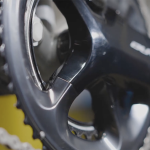Crocs Inc. reported sales jumped 73 percent in the third quarter and predicted a robust holiday selling quarter. However, the comfy shoemaker warned that continued supply chain challenges, primarily tied to pandemic-related factory shutdowns in Vietnam, would hold back revenue growth in the first half of 2022.
On a conference call with analysts, Andrew Rees, CEO, said wholesale bookings for the first half of 2022 “have been exceptionally strong,” and the company expects 2022 revenue growth to exceed 20 percent. He said, “Consumer demand for our products is high. We remain confident in our growth trajectory.”
However, given the global supply chain constraints, Crocs is facing “limitations around how much demand we can fulfill for the first half of the year,” according to Rees.
Supply Chain Mitigation Measures
Rees said the company is pursuing several steps to “mitigate the impact of this temporary disruption,” including reducing its exposure to Vietnam production.
The first step is shifting production capacity to other countries, including China, Indonesia and Bosnia. Two factories in Indonesia will be online by the end of the year, and a major plant in India is expected to open in about a year. Crocs said it would move some of the production, in the short term, back to China.
Rees said the company has “a unique advantage in that we can ramp factory production quickly due to the limited inputs and simple configuration of our products.”
In Vietnam, some factories were closed for several weeks during the quarter and began reopening earlier this month. Said Rees, “Today, most of our factories in Vietnam are operational, although they are in various stages of restarting. We expect the situation to remain fluid as the vaccination rates increase in the country.”
Overall, Vietnam was initially planned to represent about 70 percent of Crocs’ manufacturing base for 2021, although it will be “a little less than that” due to the diversification efforts, according to Rees.
A second mitigation measure is prioritizing its top-selling products and narrowing SKU count. Said Rees, “While still preserving newness, we’re able to improve factory throughput.”
Thirdly, Crocs will aggressively leverage air freight to bring in units to support the 2022 spring/summer selling season and said it plans to invest approximately $75 million to do so.
In the U.S, Crocs said it would reduce its dependency on West Coast ports by adding East Coast transshipment capabilities and moving shipments to northern ports on the West Coast.
Inventories ended the quarter at $212.5 million, up 22.1 percent year-over-year due to higher in-transit inventories tied to the global logistics challenges. Said Rees, “We definitely have product on ships outside of Long Beach.”
Finally, Rees said Crocs plans to prioritize inventory to support its most important channels: owned e-commerce, third-party e-tail, such as Amazon, and its major wholesale customers.
“I have full confidence in the supply chain team and our factory partners to manage through this temporary disruption,” said Rees.” Also, I want to emphasize that these disruptions will not distract from the long-term strategy that we believe will propel the Crocs’ brand to $5 billion-plus over the next five years.”
In mid-September, Crocs unveiled a new five-year plan that set a goal to achieve $5 billion in revenue in 2026, representing a compound annual growth rate (CAGR) over 17 percent using the midpoint of the company’s 2021 guidance ($2.25 billion) as the base year. Major growth targets were digital, sandals and China.

Q3 Sales Vault 73 Percent
The supply chain disruptions come as Crocs’ business remains on fire.
In the third quarter, total revenues of 73 percent versus the prior year to $626 million doubled from 2019. When it reported second-quarter results on July 22, Crocs had forecast third-quarter revenues would grow 60 percent and 70 percent. Wall Street’s consensus target had been $607 million.
Among channels, DTC, which includes revenues from e-commerce and company-owned stores, grew 60 percent versus the prior year and 90 percent versus 2019, to represent 51 percent of revenues. Wholesale, which includes brick and mortar retail and distributors, grew revenues 88 percent and 111 percent compared to 2019.
Digital sales grew 69 percent, achieving double-digit growth in all regions and representing 37 percent of total revenues. Digital sales were up 129 percent versus 2019. Rees said, “All channels benefited from strong traffic, higher pricing and fewer promotions.”
Clogs’ Revenues Jump 91 Percent
Among product lines, clogs sales surged 91 percent against “a strong 2020” to represent 82 percent of footwear revenues versus 72 percent last year.
“We continue to innovate and are excited about our fuzz-lined product, which is on track for holiday,” said Rees. “Clog collaborations with Balenciaga, Hidden Valley Ranch and Sankuanz in China among others continue to excite fans.”
Awareness for Crocs’ sandals collections continues to be raised with collaborations with Benefit Cosmetics that featured a classic clog and two-strap sandal.
Sandals’ revenues grew 15 percent in the quarter and 31 percent year to date. Sandals represented 30 percent of footwear sales for the quarter versus 19 percent last year.
Jibbitz‘s sales once again more than doubled for the quarter versus 2020. Said Rees, “We continue to create excitement through a fresh assortment, including recent diverse partnerships with social media personality Bretman Rock and legendary rock band, The Grateful Dead.”
Americas Paces Regional Growth
By region, revenues in the Americas of $455.9 million increased 94.8 percent against the prior year. DTC revenue growth in the region was 78.3 percent, driven by higher traffic, conversion and average transaction value. Digital penetration increased to 32.8 percent from 30.8 percent last year and 26.9 percent in 2019, Wholesale growth was 117.6 percent versus the prior year and almost triple 2019 “as we continue to see strong sell-through with our best partners,” said Anne Mehlman, CFO, on the call.
In Asia, Q3 revenues were at $83.6 million, representing an increase of 21.2 percent on a constant currency basis from last year. India posted triple-digit revenue growth while China and South Korea both grew revenue double-digit. Softness was seen with distributor sales in Southeast Asia and in Japan. Digital revenues grew 11.3 percent versus the prior year and 30.5 percent versus 2019. Digital penetration was 38.1 percent in the quarter compared to 42.3 percent last year and 32.9 percent in 2019.
EMEA’s revenues reached $86.3 million, increasing 42.8 percent on a constant currency basis with growing brand heat offsetting global logistics disruptions. Vietnam is duty-free in Europe, and more of its production stems from Vietnam versus other regions. DTC revenues in EMEA increased 22.1 percent, with strength driven by higher traffic. Wholesale revenues grew 56.9 percent. Digital growth was 37 percent versus the prior year and 85.9 percent compared to 2019. Digital penetration represented 56.9 percent of EMEA’s revenue this quarter, up from 59.8 percent last year and 49.6 percent in Q319.
Q3 Earnings Top Wall Street Targets
Adjusted gross margins for the third quarter were 64.2 percent, improving 680 basis points from last year. Price increases and fewer promotions and discounts offset higher freight costs associated with global logistics disruption.
The average selling price during Q3 was $24.42, a year-over-year increase of approximately 14.9 percent, driven by price increases, promotional strategy, and product mix.
Crocs’ adjusted SG&A improved 520 basis points to 31.4 percent of revenue versus 36.6 percent in last year’s third quarter. The decrease in adjusted SG&A rate was achieved while investing approximately $60 million versus the prior year, primarily in marketing and talent to support its strategic growth initiatives: digital, sandals, China and innovation.
Adjusted income from operations rose 172.1 percent to $205.1 million, and the adjusted operating margin was 32.8 percent compared to 20.8 percent for the same period last year. When it reported second-quarter results, Crocs had forecast a non-GAAP operating margin between 24 percent and 26 percent.
EPS more than doubled to $2.42 from 91 cents for the same period last year. Adjusted EPS came to $2.47, up from 94 cents for the same period last year. Wall Street’s consensus target has been $1.87.
Looking ahead, Crocs raised the low end of its 2021 full-year revenue guidance and now expects revenues to increase between 62 and 65 percent. Previously, guidance called for revenue growth in 2021 to be between 60 percent and 65 percent. Adjusted operating margin guidance for 2021 was raised from approximately 25 percent to roughly 28 percent due to favorable gross margins and SG&A leverage.
Rees said demand for Crocs remains “extraordinarily healthy.” He noted that Crocs’ recently-conducted, internal Brands Trends survey showed each of Crocs’ key metrics – brand desirability, brand relevance and brand consideration – up double digits. Said the CEO, “We’ve now averaged double-digit growth across these metrics for five consecutive years.”
Another sign of brand strength was Piper Sandler’s Fall 2021 Taking Stock With Teens survey that showed Crocs advance in teen-preferred rankings to the number six spot in footwear, up from nine last year and 34 five years ago.
“Our extraordinary performance in spite of the ongoing COVID-19 pandemic and widespread supply chain disruptions demonstrate the strength of the Crocs brand and product offering globally and reinforces the confidence we have in achieving our short and long-term goals,” said Rees. “Our team’s ability to navigate these disruptions for the last two plus years has been and continues to be a key ingredient, across our success.”
Shares of Crocs were trading up about 9 percent in late-afternoon trading on Thursday on management’s optimism on growth outlook and its supply chain mitigation plan.
Photos courtesy Getty. Shown Crocs x Balenciaga’s Bolt-Embellished Platform Clog, Summer 2022, worn by Elliot Page.
















